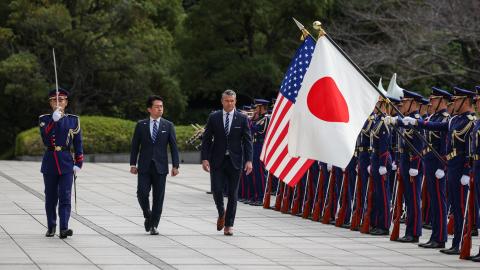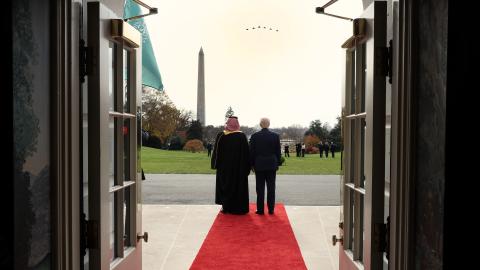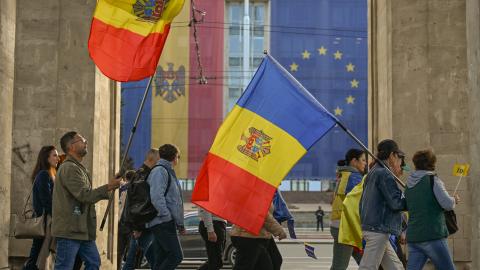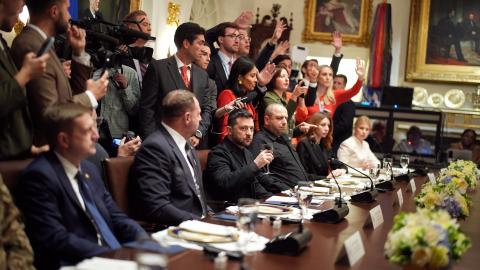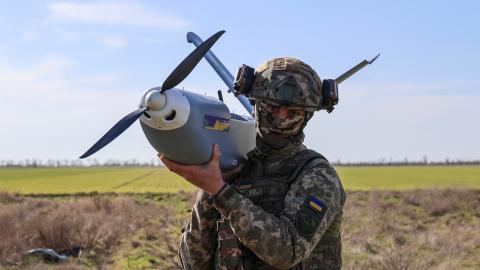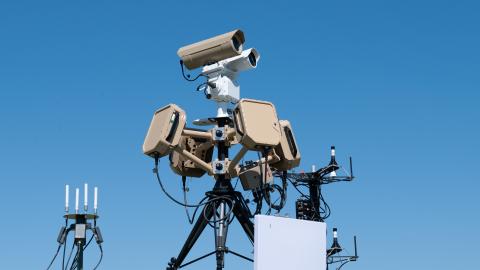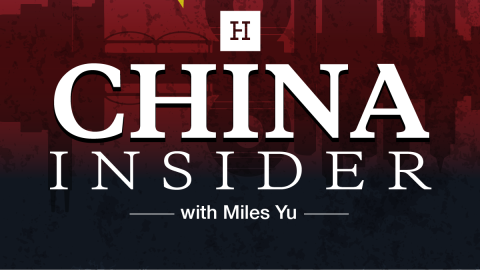In this week’s episode of China Insider, Miles Yu discusses China–Holy See relations following the announcement of Pope Leo XIV, and China’s record regarding religious freedom. Second, we revisit United Nations General Assembly Resolution 2758 and its varied interpretations from both sides of the Taiwan Strait, as the People’s Republic of China seeks to legitimize the One China principle in international forums. Lastly, Miles unpacks China’s historical role in the India-Pakistan conflict and the impact of Chinese military modernization efforts on the recent kinetic exchange in Kashmir.
China Insider is a weekly podcast project from Hudson Institute’s China Center, hosted by China Center Director and Senior Fellow, Dr. Miles Yu, who provides weekly news that mainstream American outlets often miss, as well as in-depth commentary and analysis on the China challenge and the free world’s future.
Episode Transcript
This transcription is automatically generated and edited lightly for accuracy. Please excuse any errors.
Miles Yu:
Welcome to China Insider, a podcast from the Hudson Institute’s China Center. I am Miles Yu, senior fellow and director of the China Center. Join me each week for our analysis of the major events concerning China, China threat and their implications to the US and beyond.
Colin Tessier-Kay:
It is Tuesday May 13th and we have three topics this week. First, we take a look at PRC-Vatican relations following last week’s selection of Pope Leo the 14th and China’s historical restrictions on religious freedom. Second, we discuss UN General Assembly Resolution 2758 and how it remains a focal point both of cross rate relations and the United States One China policy. Lastly, we break down the India Pakistan conflict. China’s role in the engagement and potential geopolitical consequences moving forward from the recent ceasefire announcement. Miles, great to be with you again this week.
Miles Yu:
Nice to be with you again, Colin.
Colin Tessier-Kay:
First up, this week we visit the Vatican where last week the conclave of Cardinals announced their selection for Pope, Robert Prevost, who will be the 14th Leo and first American in Papal history. While Catholicism remains one of five official religions recognized by the Chinese Communist Party, the PRC severed diplomatic relations with the Vatican back in 1951 and has since instituted policies that heavily restrict religious freedoms in domestic mainland China. But before we get too far into the weeds here, Miles, perhaps you could share a bit more on the history of the CCP’s policy toward the Roman Catholic Church and China-Holy See relations overall.
Miles Yu:
Well, that’s a very good question. Colin. Communist Party rules by a very rigid ideology – it’s communism. Communism has an unwavering hostility toward all organized religions, particularly Catholic Church. That’s because Catholic Church is well organized. It has a very long history, well-structured, and most importantly has a recognized authority, that is the Pope. So Chinese Communist Party views any organized religion with a recognized authority with absolute abhorrence, and it has to be stopped and controlled. That’s why unlike even Muslim - Islam - or Buddhism. where you have a strong religious theological centrality, but you do not have a recognized figure and a structure. And so that’s why Catholic Church historically has been the primary victim of the Chinese Communist [Party] repression. So you mentioned about 1951 and many, many Catholics have disappeared, and a long jail[time], and you heard some bishops, underground bishops, they were in jail for almost their entire life, and they die in obscurity.
And that’s why there are more Catholic martyrs in China than any other country in the world. Much of that is actually under the, since 1949. Now the Chinese Communist Party, of course recognize the enduring power of religion, particularly Roman Catholic Church, the underground church. So in 1957 the Chinese Communist Party established something called the Chinese Patriotic Catholic Association, CPCA. It is a party controlled body meant to manage Catholic affairs, totally independent of the Pope’s authority. And well, what is the Pope’s authority? One of the most institutionalized authority of the Pope is his right, absolute right to appoint bishops. And this is in direct confrontation with the Chinese Communist Party control of the sort of the society through its cadres - we call it Ganbu (幹部). And in the church this cannot be allowed. That’s why the focal point of confrontation and hostility between the Vatican and Beijing has always been the right to appoint bishops. So that’s the broader context of this issue of Roman Catholic Church’s fate inside China. Now, the Chinese government of course, in addition to sabotaging the Pope’s right, to appoint bishops, they also try to do something called a Sinicization of church in China, that would include retranslation of the Bible”according to socialist values”as they call it. So they completely screwed up, distorted the Chinese translation of the Bible. That’s why to get into China a true version of the Chinese translation of the Bible is really a capital crime and the government has shown no mercy on that.
Colin Tessier-Kay:
Yeah, and I think it’s worth mentioning as well, the late Pope Francis spent increased efforts during his tenure to engage with the CCP on several issues, mainly the treatment and persecution of Catholic practitioners and clergy, but minimally to improve baseline relations between the Vatican and Beijing. As you alluded to, China’s constitution currently allows for freedom of religious beliefs as per the five officially recognized religions, but with key restrictions that nobody can use religion to engage in activities that “disrupt public order, impair citizens’ health or interfere with the state’s education system,” which provides for a rather broad mandate and vague jurisdiction here. So Miles, how exactly did Pope Francis approach relations with China and what were the key controversies during that tenure?
Miles Yu:
Well, Pope Francis obviously was a very popular pope, but on China, this is the biggest stain on his legacy. He basically sold out the Catholic Church. In 2018 the Chinese Communist Party and the Vatican under Pope Francis signed a secret Provisional Agreement with China. This is about the appointment of bishops. As I said earlier, the right to appoint bishops is the most important privilege and right of the Pope. Otherwise, the Pope would not be a pope. But under this “Francis-Beijing agreement,” a secret agreement, the Vatican would have some say over bishop’s selection, but all candidates for bishops must be chosen, and prior approved by the Chinese Communist Party. This is a typical Chinese way to control any process of any election, which renders all elections in China meaningless because the Party has to choose the candidate - all candidates have to meet the Communist Party’s ideological requirement.
So by virtue of this agreement, Pope Francis allowed Chinese Communist party to turn the Roman Catholic church establishment in China into another rubber stamp, very much like the People’s National Congress. So it doesn’t mean anything. And this deal under Pope Francis undermined underground Catholic church - remember Chinese Catholic community is growing dramatically. A lot of them, some say most of them, over 10 million by some calculations, are underground churches. Those were basically secret underground churches, not supported by the Chinese Communist Party, not recognized. They are the real victims of Chinese religious persecution. Those are the real Catholics loyal to the Pope. Now their Pope has given the right of repression to the Chinese communist government. This is fundamentally demoralizing, and that’s why their persecution under Pope Francis has deteriorated. It appears to me, and by virtue of this secret deal with the CCP, Pope Francis legitimized the CPCA, the Chinese [Patriotic] Catholic Affairs organization, a tool of repression and persecution.
And so this is not a good thing. This is probably the biggest stain on Pope Francis’s legacy. However, it is not without a protest--the brave cardinal in Hong Kong, Cardinal Joseph Zen and several other Catholic leaders have condemned this sellout agreement under Pope Francis as a betrayal of faithful Chinese Catholics and the concession to authoritarianism. But Pope Francis didn’t really budge, he refused to even meet with Cardinal Joseph Zen when he was alive in Rome. And this is really a disgrace in my view. Now even worse, despite the secrecy of this agreement of 2018, Pope Francis renewed this disgraceful agreement in 2020 and again in 2022. I understand there’s a dilemma because how do you deal with the totalitarian regime when you have a lot of your followers inside China? But again, this is not the way to do it, which bring us to the pass of Pope Francis and the new hope, Pope Leo XIV - from Chicago.
Colin Tessier-Kay:
Yeah, and a baseball fan at that, too. And it seems, with at least that much - as his predecessor’s legacy that he now has to assume and carry forth - with looking ahead now under Pope Leo XIV and the future of China-Holy See relations. Miles, in your mind, what’s currently at stake here and what role can the new Pope play in the evolving relations during this transition period in church leadership?
Miles Yu:
I think a big challenge for Pope Leo XIV would be his decision to whether continue, revise or cancel this 2018 Provisional Agreement. This decision is going to be very important. It also will not only strengthen Catholic Church’s presence in China, but most importantly it is going to regain Catholic church’s credibility globally in defending religious freedom. And so that is a very big decision for the new Pope to make. So, and I think in my view, he should really side strongly with the underground church and push back against Chinese Communist Party’s demands. So maybe the price is a dramatic diplomatic rupture, but the irony is, there is no formal diplomatic relationship between the Vatican and Beijing. The Vatican is [also] the only sovereign entity in Europe that recognizes Taiwan diplomatically. So there’s nothing to lose in my view. I think this is a very important opportunity for the new Pope to right the course.
Colin Tessier-Kay:
And that’s actually kind of a perfect transition into our next topic for today where we return to a somewhat regular topic of discussion here on China Insider UN General Assembly Resolution 2758. Briefly, some background, on October 25th, 1971, the UN General Assembly passed Resolution 2758 that effectively recognized the people’s Republic of China as the sole legitimate government of China replacing the ROC with the PRC on the UN Security Council. For those familiar with cross street relations in Taiwanese history, this was a pivotal moment in international relations with the significant geopolitical consequences that we are still currently dealing with today. Miles, can you start us off here with a brief background refresher on Resolution 2758 and why the vote occurred in the first place?
Miles Yu:
Well, if the 2018 “Vatican-Beijing Secret Agreement” is a disgrace, this Resolution 2758 is another disgrace in my view of even bigger significance. What happened is in October 1971, on the eve of Richard Nixon’s visit to China, the United Nations General Assembly, mind you it’s the General Assembly, not its Security Council, passed the resolution. It’s called Resolution 2758. It basically recognized the People’s Republic of China, PRC, as the only legitimate representative of “China” in United Nations, in the meantime expelled the representatives of Chiang Kai Shek, that’s the actual phrase. It is not a Republic of China government, it’s not Taiwan, it’s the representative of Chiang Kai Shek. It’s this person to be kicked out not only from the UN, but also from the Security Council as a permanent member. And this is very interesting because number one, it shows the incompetence of the Nixon administration at this particular juncture.
Our ambassador to the UN at the time was George H.W. Bush, Bush the senior, he was pretty not doing anything necessary to stop this trainwreck. And of course he was remote controlled by Mr. Henry Kissinger who was in Beijing at that very moment negotiating for the conditions for President Nixon’s visit, which would happen in four months’ time. So this is basically a matter of incompetence of US diplomacy. It’s actually one of the biggest blinders of US diplomacy in my view. And we’re still suffering from the consequences of that now. This is the background of UN Resolution 2758 and since then it has a lot of problems because China misinterpreted this resolution, and the United States has failed to defend its position strongly and to spell out this clear distinction between what Beijing thinks and what Washington thinks—until very recently.
Colin Tessier-Kay:
Yeah, and while the immediate outcomes of Resolution 2758 were we’re pretty clear in replacing the ROC with the PRC as the UN Security Council representative, the US, China, as well as international relations generally, each took unique form and varied interpretation like you mentioned, for how they would principally view the resolution in the context of their sovereign foreign policies. One such distinction we’ve seen that arose was the US having the One China policy and the PRCS One China principle. But miles, what exactly are the different interpretations here of the resolution that play a significant role in the current dialogue?
Miles Yu:
Well, before I answer that question, let me just say that Resolution 2758 in my view is completely illegitimate, it should not even be there because the foundational basis is not there. It violates UN’s own charter. According to Article 18, Section 2 of the UN charter, you have to really discuss in the United Nations General Assembly questions that will be divided into two categories. One is what we call the Important Question, another one is Nonimportant Question. So for the Important Question to be discussed, and voted at the UN General Assembly, it is said in Article 18, Section 2 of UN charter that decisions on Important Questions shall be made by two-thirds majority of the members present and voting. Now what is an Important Question? Well, an Important Question would include matters, according to the UN’s own charter, recommendations on international peace and security, number one. Number two, admission of new members. Number three, suspension or expulsion of members. And number four, budgetary questions and number five, trusteeship and other key administrative issues. So heading into numbers two and three, that is membership, suspension or expulsion of members. That is the UN’s own rule. So by definition, this issue that was discussed and voted on in 1971 should have been considered as an Important Question. Nevertheless, because of opposition from our friend and ally United Kingdom and also the sponsor of this resolution, Albania, China’s only friend in Europe at the time, and many of the newly independent countries in Africa, they said, no, the discussion of China’s membership inthe UN and expulsion of Taiwan’s membership in the UN should not be made as an Important Question. This is very ridiculous. So the two-thirds threshold was not really adopted. So this issue was treated merely as a non-important question, which only require a simple majority, more than half of the votes to pass.
That’s how we lost the vote over there. And the Nixon administration under George Bush, sorry George HW Bush under Nixon administration, didn’t do anything to challenge this illegality. So that’s one of the problems over there.
Now back to your earlier question about the interpretations. Now you think about this, Resolution 2758 only solved one problem - that is who represents “China.” You have two entities here who are competing for the right to represent China. One is People’s Republic, Chinese mainland, that’s communist China. Another one is the government in Taiwan, which called itself, even today still calls itself, the Republic of China, ROC. So the PRC versus ROC, those are two entities. This Resolution only solves one problem, that is to decide on which of the two represents China. The revolution said yes, the PRC represents China. It says nothing about the other one, whether it represent China or not.
Now, of course, ROC would say it doesn’t want to represent China, but who does the ROC represent? The answer obviously is Taiwan because it remains even at the time a completely separate entity itself. And over the years, the ROC government in Taiwan, since the late 1990s, has stopped all efforts to compete with the PRC for the right to represent “China.” So they say, no, we’re not going to represent China. That’s fine. We’re going to represent Taiwan. So this is the question we’re having today. That is UN Resolution 2758 has in no ways solved the problem of Taiwan’s representation in international space. And that’s why we have to start a new conversation about who actually represents Taiwan in international space. The answer should be very obvious. Taiwan itself, not China. Today, the official U.S. government position is just that, ie. UN Resolution 2758 did not solve the issue of Taiwan’s representation at the United Nations and other international spaces.
As you say, as you mentioned in your question, is Taiwan part of China or not? What is the difference between One China principle and One China policy? One China Principle is China’s false narrative that includes the core idea that Taiwan is part of China which China says it is included in UN Resolution 2758, a position the US government has never recognized. We always say Taiwan’s international status is still to be decided. If UN Resolution 2758 really solved the problem of Taiwan’s representation issue and as China said, Taiwan should be a part of China, the wording would’ve been very different. The wording would have been - the People’s Republic of China is the only legitimate representative of China “including Taiwan.” But it didn’t say that. It didn’t say that at all. So that’s why this whole idea about Taiwan’s representation was resolved by the UN Resolution 2758 is really ridiculous. It didn’t happen. It was a fantasy.
Colin Tessier-Kay:
And I think that distinction is really, really important. And certainly at the very least a conversation - it warrants a conversation to really interpret what is meant from this. And as you know, you would with any kind of legislation, there’s litigation that occurs to really draw out what the impact and what the true meaning behind the rulings are. And you mentioned the false narratives that China’s putting forward in regard using Resolution 2758 as their source. And it reminds me a couple months back in February, towards the end of February, I believe the Senate Foreign Relations Committee released a resolution, introduced I think by senators Jim Risch and Jeanne Shaheen, that aimed to counter and refute the malign influence and coercion perpetuated by the CCP against Taiwan, specifically that China claims Resolution 2758 represents an “international agreement” that China has sovereignty over Taiwan, among other policy reaffirmations, and declarations of opposition to any peaceful resolution in the Taiwan Strait. So US-Taiwan relations, while unofficial, have remained a focal point of not just US foreign policy from the White House, but via congressional legislation as well, like we saw with the Taiwan Relations Act. So Miles, let me transition this into a question then. What is the importance of Resolution 2758 now and how might it impact US Cross-Strait policy and relations going forward from here?
Miles Yu:
Well, it’s important because we have to deal with the obvious reality of Taiwan as an indisputable sovereign, independent country. It’s this pure and simple. The issue right now is whether Taiwan should declare independence or not, but doesn’t really answer the question whether Taiwan is in fact an independent country already. It is like to say, you know what, before July 4th, 1776, there was no independence in North America among the English colonies. Of course there was. It’s just on that day we declared independence, we make it official. So the Taiwanese government has said repeatedly by different administrations so far that there was no need for Taiwan to declare independence because Taiwan is already an independent country. Its name is Republic of China. And so the issue right now is whether the international community would recognize that reality, but it is not to declare something new, to create a new state.
Taiwan is already a state with sovereignty and a national awareness. You have 23 million Taiwanese people who are very good citizens of the world, and Taiwan plays a vital role in global commerce. It is open and democratic, it’s a very vibrant society. So this UN Resolution 2758 is really a Cold War relic. It should be abandoned resolutely, I should say, because it violates the UN’s own rules for expulsion and representation. It’s also obscure and neglected Taiwan’s district international legal status and it was passed in a highly political, not legalistic environment. And lastly, it has been misused by the PRC government as a blunt instrument to justify the silencing and isolation of the 23 million Taiwanese people. So if we take the UN seriously, if we take the UN’s fundamental principles seriously, and we should really make sure that UN’s Resolution 2758 is the illegitimate resolution, it never should have happened.
Colin Tessier-Kay:
Moving to our final topic this week, over the weekend, India and Pakistan reached a ceasefire agreement that ended the most intense fighting between the two nations and decades involving aircraft missiles and strategic drones. While this is the latest in a long history of conflict between India and Pakistan, particularly with regard to the Kashmiri region, Miles, can you walk us through a bit about the underlying causes of this conflict here?
Miles Yu:
Alright, the conflicts go back to 1947 when India and Pakistan partitioned from each other. Basically, the British India was gone and the Indians and Pakistanis decided to be different countries. Those are good things because India was predominantly Hindu and Pakistan was predominantly Islam [Muslim]. Now there’s one area that is tricky that remained unresolved clearly on paper during the partition, that is the state of what India called Jammu and Kashmir, and this is a Muslim majority country, but with the Hindus as the ruler. And this has become the root of the confrontation between India and Pakistan over which they fought wars over the years. But this is not really a very clear-cut problem between India-Pakistan, China also has a stake in it, too. This India-Pakistan confrontation in Kashmir in reality is a three-way strategic confrontation between India on one side, and Pakistan and China on the other. Because right now, since the 1962 Sino-Indian War, border war, the Chinese government has occupied a huge chunk of Kashmir. It’s called Aksai Chin. That’s about one-sixth to one-fifth of the entire Kashmir region. So you have this India administered Jammu and Kashmir region, you have the Pakistan administered Azad Kashmir, and then you have the Chinese occupied area of Aksai Chin. So basically it is a three-way confrontation. That’s what makes this flareup very complicated. It is - in essence, this India-Pakistan confrontation is really between China and India, in my view.
Colin Tessier-Kay:
Yeah. So let’s build on that and tie more into China here because while China’s geopolitical influence certainly ties in here just by relevancy, perhaps even more directly, was the announcement from Islamabad officials claiming Pakistan used Chinese made J-10C aircraft to launch air-to-air missiles against Indian fighter aircraft last Wednesday. While Beijing hasn’t yet confirmed the use of Chinese weapons specifically, this development may significantly impact the current détente between Beijing and New Delhi. And certainly, security analysts and other experts have argued that China’s military modernization now both along its border installations with India, well as from satellite intelligence from space, has reached the point where they’re really able to scrutinize Indian [military] actions - and especially within the context of this latest conflict - within real time. So Miles, kind of a multi-part question here for you, but what exactly has been China’s role, both historically I guess in the India-Pakistan conflict, but as well as pertaining to the latest kinetic conflict that we saw last week and week before? And what can we conclude as significant regarding their involvement here?
Miles Yu:
Well, China, India, their mutual hostility started since 1959 when the Dalai Lama fled to India. And the Indian government gave the Dalai Lama a sanctuary, which is still there in the foothills of the Himalaya Mountains. That enraged the Chinese Communist Party and China basically views India as the geopolitical challenger, the rival in South Asia, and even in Central Asia for that matter. And China basically launched a full scale war in 1962 against India in which India was defeated. As a result of the war, China occupied this area, as I say, called Aksai Chin, which the Indian government says is part of the Indian territory of Ladakh.
China has since aligned itself very closely with Pakistan and made Pakistan a proxy in this decades-long confrontation with India since the 1960s. China has recently built the so-called CPEC, China-Pakistan Economic Corridor, through the disputed area. And Pakistan has [been] completely captured by the Chinese through economic aid and weapons supply. China is one of the major weapons exporters each year. And of all of China’s weapons exports worldwide, half of that would go to one country - that is Pakistan. So this is how important Pakistan is. China and Pakistan jointly developed their fighter jets and China also has this knockoff version of the Soviet design fighter jet. Now it’s called J-10, but China has one problem, that is internationally Chinese weapons, particularly the fighter jets and its air-defense systems or HQ-9, are not selling very well. So China used this Indian-Pakistani flare up last week as a way to basically promote itself, as an opportunity to advertise its own weapons.
That’s why on internet you have this full geared Chinese propaganda efforts worldwide, across all domains. Twitter, Facebook, you name it. They spanned and talked about all the Chinese weapons Pakistan was operating during this conflict, making it look like a major triumph, shooting down some French made Rafale jets piloted by the Indian Air Force people, so on and so forth That was just overly dramatic. As a matter of fact, if you look at the real efficacy of Chinese weapons, Chinese air-defense system for Pakistan has completely failed. The Indian missile strikes penetrated the Pakistan territory with no problems. The Chinese HQ-9 was touted as Chinese answer to Patriot missiles. And it’s not really working that well. And I don’t know whether the Chinese made J-10 really performed that well. It remained to be seen. We don’t know much intelligence at this time, but I doubt it. I doubt that the Chinese J-10 will be that great. And also the Indian Air Force right now, it’s increasing its capability. So in other words, China’s support for Pakistan diplomatically, militarily, technologically is substantial and all really is part of this proxy war between India and China, triggered by the chaos in the Kashmir region. China played a very important part in all that.
Colin Tessier-Kay:
Well, I appreciate all of that context - exploring further that context - and the nuance of all of this, especially over such a short, what seems to be short, conflict as it presents tremendous implications [for global security]. But we are unfortunately at our time for today. Miles, as always, thank you for this week’s conversation and letting us your expertise on these critical issues. We’ll see you again next week.
Miles Yu:
Okay, see you next week, Colin.
